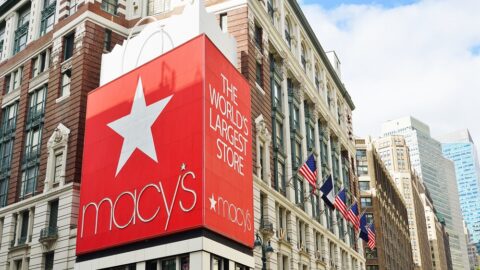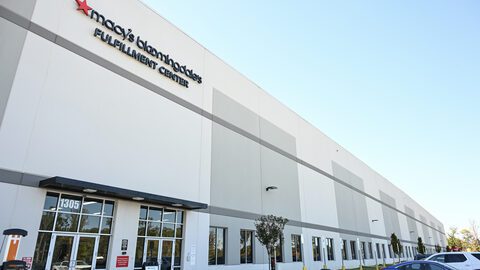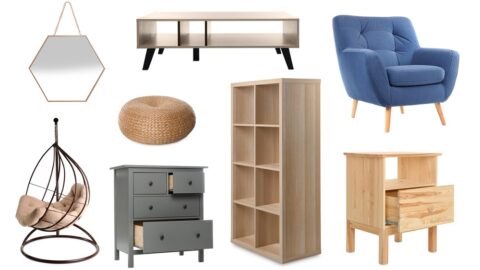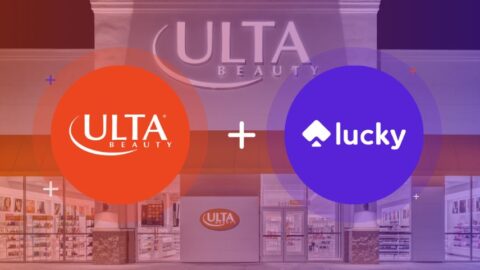Following is Part 2 of the Retail TouchPoints series, titled: How Innovative Technologies Are Saving The Store. This section spotlights how best-in-class retailers are leveraging digital technologies in stores to increase customer engagement. Click here to access a complete PDF version of the feature.
The rapid development of e-Commerce and mobile technology has greatly impacted the ways brands and retailers connect with consumers.
As a result, consumers have become accustomed to the interactivity of mobile and the convenience that e-Commerce vendors provide. Several retailers have implemented in-store technology solutions that cater to these rising customer expectations, including Build-A-Bear, Bloomingdale’s and Left Shoe Company.
One way to address technology offerings is to target specific consumer segments. Providing a tactile, user-driven experience is especially important for retailers that cater to Millennials, especially children and teens. Consumers of this age group are growing up in a time where voice-activated GPS programs and touchscreen computers are ubiquitous. Retailers working in this space must keep in mind that children today have always had instant access to technology, and are accustomed to accessing information immediately.
Build-A-Bear is reaching its young child demographic in a partnership with Infusion. The retailer has implemented a variety of interactive touch screen stations in a select number of “future stores.” The touch screens allow users to design bears according to color, pattern, species, outfit and even temperament. Shoppers can even give them virtual baths. Six months after implementation, Build-A-Bear sales increased by 30%.
“The 10-year-old girl of today has more access to more information than any other child in the history of the planet,” said Dave Finnegan, CIO of Build-A-Bear. “We knew this was the digital generation. We were a very high-touch, interactive brand already, so deciding to use touch screens was a natural fit. This generation of kids has technology in their DNA. They innately ‘get it.’”
The new Build-A-Bear store experience has been so successful because the retailer focused first and foremost on creating a memorable and fun experience, rather than just selling products, noted Peter Rivera, VP and Executive Creative Director of Infusion. “You can buy bears anywhere but what’s unique about Build-A-Bear is the construction of the bear, building your best friend,” Rivera said. “Infusion created stations for them that we like to call ‘ownable moments,’ which are moments that no other brands can claim.”
Retail is ultimately about storytelling, Finnegan added. By using interactive digital signage technology, Build-A-Bear was able to brand itself beyond the physical product.
“In the context of a digital platform, the story you tell can be a lot more flexible and dynamic,” said Finnegan. “There are the traditional seasonal stories like ‘Back To School’ or ‘Mother’s Day,’ but digital allows for more personalized experiences. For Build-A-Bear, we have QR codes for specific stories. We can give you a special QR code that can unlock a birthday adventure at a store. Once you put it in, every station in the store gets themed into your birthday celebration.”
Virtual Augmentation Provides Consumer Convenience And Detailed Metrics
Some retailers are using touch screen technology to provide a convenient shopping experience that also extracts valuable metrics for future leads. Bloomingdale’s, for example, has implemented a virtual augmentation platform from FaceCake Swivel. The platform currently is being tested in select Bloomingdale’s stores, and is permanently installed in the Microsoft Retail Experience Center in Redmond, Wash.
 Swivel acts as a digital dressing room. By using the Kinect from Microsoft, Swivel tracks customer movement and allows shoppers to try on a variety of virtualized outfits and accessories. Customers can try on a variety of items without the hassle of trekking to a store fitting room, and can even upload pictures to garner feedback from friends.
Swivel acts as a digital dressing room. By using the Kinect from Microsoft, Swivel tracks customer movement and allows shoppers to try on a variety of virtualized outfits and accessories. Customers can try on a variety of items without the hassle of trekking to a store fitting room, and can even upload pictures to garner feedback from friends.
As consumers leverage the Swivel technology, retailers are able to collect detailed metrics on shopper preferences and patterns. “We track everything you can imagine,” said Linda Smith, CEO of FaceCake. “Color, most selected style, something that was rejected quickly after wearing, products that are picked up most by customers, as well as other behaviors.”
The users decide which outfits to try on and Swivel follows up with suggestions. This way, the shopper doesn’t feel bombarded by advertising, said Smith. The consumer is the one selecting what he or she wants to wear. This generates a more reliable source of leads for retailers looking for data on what items to stock or promote since customers are making selections with little advertising or marketing involved.
FaceCake also can augment marketing for home décor retailers, Smith explained. Consumers can upload pictures of their living spaces to the Swivel and experiment with potential purchases by adding them into the rooms.
Left Shoe Company Uses 3D Technology To Improve Product Fit
Implementing innovative store technology is not always about leveraging new channels and emerging trends. For example, some luxury retailers successfully have mixed innovative technology with traditional craftsmanship.
The Left Shoe Company sells custom-fitted shoes by acquiring foot measurements through 3D scanning. Shoppers place their feet on a 3D scanner that takes 150 pictures per foot during a 360-degree scan, then uploads the images.
A retail specialist reviews the foot measurements and discusses various information points with the customer, such as the shape of each foot, a wide versus narrow fit, and the differences between the right and left feet. Measurements are sent to Portugal, where the shoes are handcrafted to order.
The precise needs for shoe-fitting led Left Shoe to adopt the technology, according to Patrick Mayworm, Co-Founder of The Left Shoe Company U.S. “The founders realized that 3D scanning could provide precision measurement data for accurately determining how to make each shoe for a customer,” Mayworm said. “Unlike other clothing and apparel, shoes must be designed and built accurately for each foot and the tolerance levels for feet are much higher than other parts of the body.”
Make Cost And Creativity Implementation Priorities
As retailers are implementing emerging technologies, Finnegan advises retailers to take creative, cost-effective approaches to the integrations. Build-A-Bear scaled the production of its interactive stores by creating a visualization of a location using green screens and adding in tech animations afterwards, Finnegan explained. Typically, retailers build physical store prototypes.
“You are not going to use half of the things you experiment with in a prototype store, but you still have to install them because you don’t know which half you’re going to use,” said Finnegan. “We spent over $10,000 on the green screen visualization but other companies spend more than $100,000 on prototype stores. By using video, we were able to efficiently and economically understand what children wanted in stores.”
Regarding new technology costs, Jim Dion, President and Owner of Dionco, warned that retailers should consider all options. Mobile apps, he explained, might not be right for all retailers, in particular smaller brick-and-mortar companies. Instead, he advised, these merchants should start with more economical investments. A non-platform HTML5 web site, 2D barcoding and QR codes are good first steps, he noted. There are several QR code generators that are available for free such as Kaywa and Skanz.
Even interactive digital screens may be cheaper than developing a mobile app, Dion said, as there are vendors that can offer affordable screens at entry-level models or smaller monthly payment options.
Plan Implementations With Business Objectives In Mind
The growing popularity of mobile and social media has changed the landscape of consumer interaction, but consumers’ needs remain the same. They still want artisan craftsmanship from luxury providers, personalization from customizable stuffed animal vendors, and convenience from clothing stores. Leading retailers are not using new technology to change their objectives; instead, they are leveraging technology to supplement their established business objectives.
Retailers that want to stay relevant in the Internet Age must integrate new technology into their stores, but before doing so, they should first establish overall business objectives, brand stories and target audiences. There is no “one-size-fits-all” technology solution for all merchants.
Click here to download a PDF version of the report.












